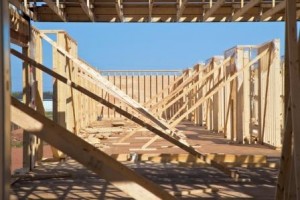The Improving Markets Index released by the NAHB for the month of February gives homeowners across the nation reason to rejoice. Packed with positive numbers and more metros being added for the sixth consecutive month, it is hard to deny the housing recovery. The Improving Markets Index highlights metro areas that have shown growth for six consecutive months in three distinct categories. If a market is listed in the Improving Markets Index, it means it has seen an increase in permits, growth in employment stats as provided by the Bureau of Labor statistics, and home values have appreciated as reported by Freddie Mac.
In fact, every state—and the District of Columbia—now have at least one metro listed in the Improving Markets Index. The total  number of improving markets increased from 242 in January to 259 in February, with some of the newest additions being Fort Wayne, Ind., and Albuquerque, N.M. The complete list of metros can be viewed in the report here. NAHB Chief Economist David Crowe said, “Just over 70 percent of the 361 metros covered by the Improving Markets Index are listed as improving this month.” This report was created to spotlight areas showing growth and consistent progress overall, often spotlighting metros that were not covered in most national news stories at the time. When the NAHB began quantifying and measuring the data and identifying the markets that were improving in September 2011, the first report included only 12 metros.
number of improving markets increased from 242 in January to 259 in February, with some of the newest additions being Fort Wayne, Ind., and Albuquerque, N.M. The complete list of metros can be viewed in the report here. NAHB Chief Economist David Crowe said, “Just over 70 percent of the 361 metros covered by the Improving Markets Index are listed as improving this month.” This report was created to spotlight areas showing growth and consistent progress overall, often spotlighting metros that were not covered in most national news stories at the time. When the NAHB began quantifying and measuring the data and identifying the markets that were improving in September 2011, the first report included only 12 metros.
One positive side effect of growth in a particular market is that potentially fewer homeowners will be upside down in terms of their home’s value. Increased consumer confidence also occurs when the three areas measured in the Improving Markets Index—employment growth, house appreciation and permit growth—show momentum. While the housing market is not projected to see huge gains overnight, as it experienced in its most recent boom, this recovery is expected to be more steady and solid.
For more information about First Preston HT, please visit FirstPrestonHt.com. You can also join our community on Facebook and Twitter.
Sources:
1) http://www.nahb.org/reference_list.aspx?sectionID=2223
2) http://www.nahb.org/news_details.aspx?sectionID=2223&newsID=15783
